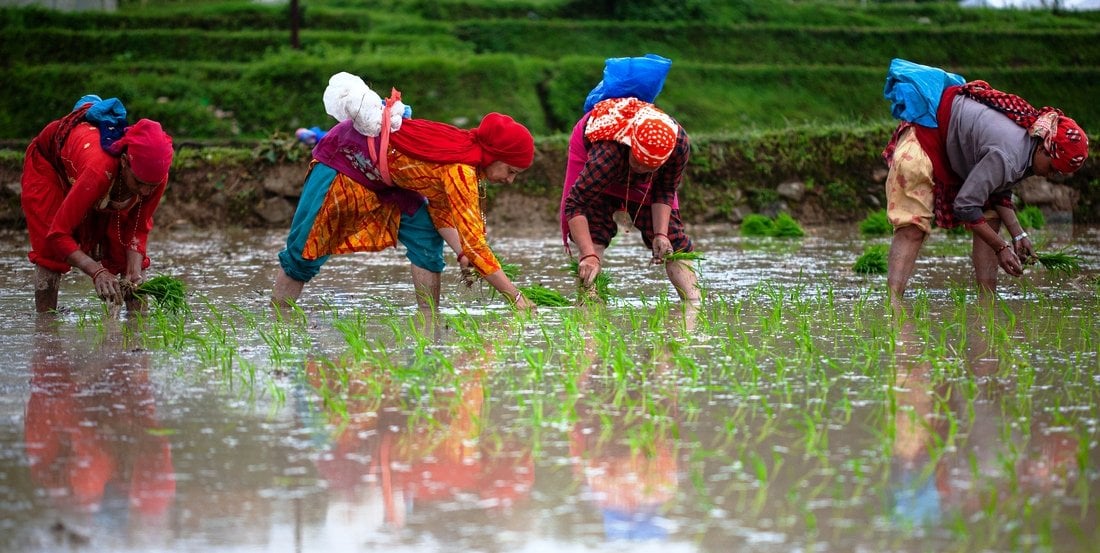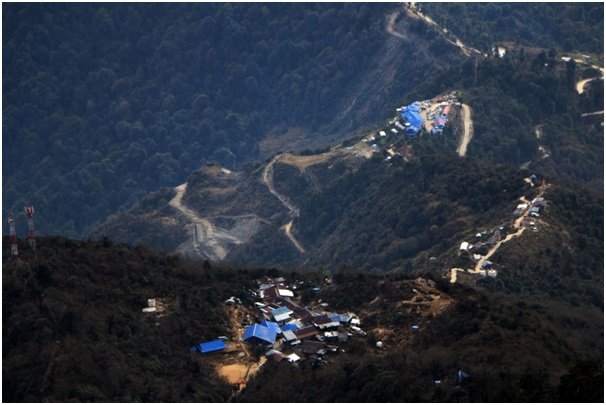De-facto leaders in charge of Traditional Agriculture

Traditional farming methods based on indigenous knowledge and culture are critical to Nepalese food and nutritional security. Nepal is an agriculture-based economy, with about 57.3% (CBS 2022) of the population dependent on agriculture and where 33.83% of the population is rural. The reduction in the rural population is associated with the classification based on municipality considering the areas in the municipality are still inaccessible. However, Contemporary challenges like biodiversity loss, climate change, and globalization have pronouncedly impacted rural socio-cultural and traditional farming systems of the rural areas of Nepal. The transition away from the traditional agriculture system is being driven by low productivity and an increase in risk brought on by climate change-induced stresses, poverty, and a lack of employment.
Research indicates that Nepal's climate zones have shifted (examples include a rise in monsoon precipitation and more erratic rainfall), making it increasingly difficult to carry out agricultural activities. There is decreasing number of rainy days, but higher intensity rainfall events are increasing. Intergovernmental Panel on Climate Change have described potential economic consequences including productivity changes in agriculture (especially in rain-fed agricultural system) and other climate-sensitive sectors. Farmers are looking for off-farm income alternatives to supplement their income as a result of rising climatic stresses.
In addition, improvements in market access, globalization, and urbanization have caused changes in rural society that are evident in the economic, cultural, and political spheres. As traditional farming systems are labor intensive and economically less beneficial, the youth are losing interest and do not consider agriculture as an occupation for long-term career development. With increased educational access and qualification, youth are more drawn to off-farm opportunities; however, a dearth of off-farm opportunities locally is a compelling factor for out-migration. Outmigration has been a significant challenge for Nepal, changing sociocultural lifestyles and farming systems, as well as shifting gender roles and responsibilities. Migration has caused a shift in gender roles and responsibilities in the traditional farming system i.e. feminization in rural agriculture.
Higher male outmigration has resulted in the situation of de facto women household heads in Kaski's Paudur village, which tracks the national trend of women-headed households increasing from 25.73% in 2011 to 31.55% in 2022. Recent data showed that 64.8% of women members of families are involved in agriculture, whereas only 50.6% of men are engaged in farming activities in Nepal. The increased on-farm workload for women and left-behind family members has caused a reduction in traditional crop cultivation.
Local farmer Hari Sharan Paudel explains the situation: "As most of the youths have left the village, the labor shortage has resulted in a reduction in cultivated lands. Traditional and labor-intensive products are being phased out. In my household, I, my wife and two daughters-in-law work and we are suffering from the same problem.”
Traditionally gender-specific roles in farming matters and household-level decision-making processes are highly male-dominated in the patriarchal socio-culture of Nepal which has immense implications on traditional farming matters and resource management. Studies from Nepal and outside show that women's involvement is high in high drudgery-ranked works such as harvesting, weeding, threshing, and post-harvest processing while men prefer to engage in activities like marketing, tillage operation, manuring and fertilizing the crops (males linked with the monetary activities whereas women don’t share direct linkage with the monetary task). With the migration of male family members, considerable participation of women members in household and farm-level decision-making has been observed i.e. farming system is being controlled by women family members. In the context of influential migration, significant numbers of household decisions have to be made by only women members.
Longer-term men migration has led to an on-farm labor crisis as well as an increase in the workload for women. Due to labor scarcity, wage labor in agriculture has increased significantly. It seems like buying agricultural products from the market is cheaper than producing by farmers themselves in their farms using labor.
The situation has triggered farmers to leave their land barren and buy food from the market which is explained by local women farmer Maina Kumari Kunwar: “My husband and son work in Pokhara, we (herself and her daughter) are not able to cultivate all of our lands and we don’t even need too. I have shared out some productive lands and abandoned most of the low productive lands”.
“Migration has both positive and negative impacts on women members of households, there are increasing roles, responsibilities, and workload but also have got opportunities to move with their own decisions. Women’s participation in community institutions like cooperatives, mothers' groups, and other social issues have increased as they became 'de facto' household heads. Their control over agricultural matters and financial matters have been increased due to man out-migration.”
In a way, it has opened up opportunities for women exposure and take leadership in the family and society. Policy support in the form of both direct and indirect incentive measures is required to support and encourage women farmers' efforts in the conservation and use of agro-biodiversity in traditional agricultural systems. Changed social contexts and feminization resulting from out-migration must be acknowledged by formal sectors, development agencies, and policymakers who work in traditional or rural farming systems. Clearly defined gender-responsive strategies, programs and implementation would be effective. Women's empowerment, training, and participation in decision-making, women's drudgery reduction in farming and post-harvest processing, women farmer friendly extension tools, and access to information and services should be prioritized to improve women's productivity and welfare in light of man out-migration and feminization in agriculture.






Leave Comment